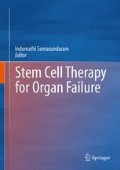Abstract
Breast milk is a complex mixture of interacting compounds including carbohydrates, proteins, antibodies, vitamins, growth factors, hormones, cytokines, and several immunizing factors for the newborn. Breast milk also encompasses epithelial cells, colostral corpuscles, polymorphonuclear leukocytes, mononuclear phagocytes and lymphocytes, with those of epithelial lineage forming the main bulk of cells within 2 weeks of establishing lactation. These complex mixtures of interacting components of breast milk contribute to the beneficial effects of breast feeding. This may extend well beyond weaning and has been shown to prevent or mitigate several diseases later in life. The cellular constituents of breast milk and its significance to the neonate for growth, immunity, and regeneration have been highlighted.
Access this chapter
Tax calculation will be finalised at checkout
Purchases are for personal use only
References
Medina D (1996) The mammary gland: a unique organ for the study of development and tumorigenesis. J Mammary Gland Biol Neoplasia 1:5–19
Esmailpour T, Huang T (2008) Advancement in mammary stem cell research. J Cancer Mol 4(5):131–138
Russo J, Russo IR (2004) Development of the human breast. Maturitas 49:2–15
Michie CA (1998) The long term effects of breastfeeding: a role for the cells in breast milk? J Trop Pediatr 44:2–3
Hanson LA (1999) Human milk and host defense: immediate and long-term effects. Acta Paediatr Supply 88:42–46
Hamosh M (2001) Bioactive factors in human milk. Pediatr Clin North Am 48:69–86
Pabst HF (1997) Immunomodulation by breast-feeding. Pediatr Infect Dis J 16:991–995
Labbok MH, Clark D, Goldman AS (2004) Breastfeeding: maintaining an irreplaceable immunological resource. Nat Rev Immunol 4:565–572
Boutinaud M, Jammes H (2002) Potential uses of milk epithelial cells: a review. Reprod Nutr Dev 42:133–147
Hanson L, Silfverdal SA, Stromback L, Erling V, Zaman S, Olcén P, Telemo E (2001) The immunological role of breast feeding. Pediatr Allergy Immunol 12:15–19
Fan Y, Chong YS, Choolani MA, Cregan MD, Chan JKY (2010) Unravelling the mystery of stem/progenitor cells in human breast milk. PLoS One 5:e14421
Patki S, Kadam S, Chandra V, Bhonde R (2010) Human breast milk is a rich source of multipotent mesenchymal stem cells. Hum Cell 23:35–40
Cregan MD, Fan Y, Appelbee A, Brown ML, Klopcic B, Koppen J, Mitoulas LR, Piper KM, Choolani MA, Chong YS, Hartmann PE (2007) Identification of nestin-positive putative mammary stem cells in human breast milk. Cell Tissue Res 329:129–136
Sleeman KE, Kendrick H, Ashworth A, Isacke CM, Smalley MJ (2006) CD24 staining of mouse mammary gland cells defines luminal epithelial, myoepithelial/basal and non-epithelial cells. Breast Cancer Res 8:R7
Reis-Filho JS, Milanezi F, Paredes J, Silva P, Pereira EM, Maeda SA, de Carvalho LV, Schmitt FC (2003) Novel and classic myoepithelial/stem cell markers in metaplastic carcinomas of the breast. Appl Immunohistochem Mol Morphol 11(1):1–8
Chu PG, Lyda MH, Weiss LM (2001) Cytokeratin 14 expression in epithelial neoplasms: a survey of 435 cases with emphasis on its value in differentiating squamous cell carcinomas from other epithelial tumors. Histopathology 39:9–16
Hassiotou F, Beltran A, Chetwynd E, Stuebe AM, Twigger A- J, Metzger P, Trengove N, Lai CT, Filgueira L, Blancafort P, Hartmann PE (2012) Breast milk is a novel source of stem cells with multilineage differentiation potential. Stem Cells 30:2164–2174
Indumathi S, Dhanasekaran M, Rajkumar JS, Sudarsanam D (2013) Exploring the stem cell and non-stem cell constituents of human breast milk. Cytotechnology 65(3):385–393
Author information
Authors and Affiliations
Corresponding author
Editor information
Editors and Affiliations
Rights and permissions
Copyright information
© 2014 Springer India
About this chapter
Cite this chapter
Somasundaram, I., Haridoss, N., Stubblefield, P.G. (2014). Breast Milk Cells: Bliss to Neonates. In: Somasundaram, I. (eds) Stem Cell Therapy for Organ Failure. Springer, New Delhi. https://doi.org/10.1007/978-81-322-2110-4_21
Download citation
DOI: https://doi.org/10.1007/978-81-322-2110-4_21
Published:
Publisher Name: Springer, New Delhi
Print ISBN: 978-81-322-2109-8
Online ISBN: 978-81-322-2110-4
eBook Packages: Biomedical and Life SciencesBiomedical and Life Sciences (R0)

